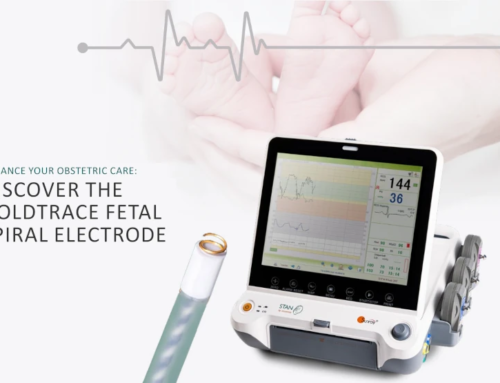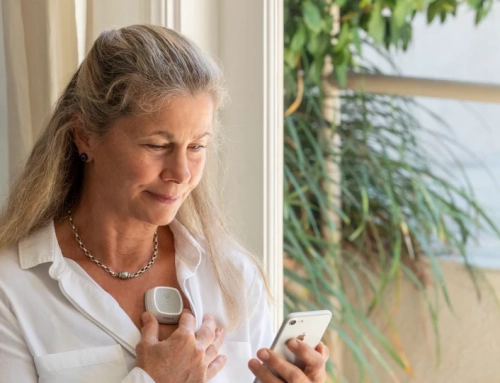The Coala Heart Monitor is a portable ECG monitoring device. Patients use the device by holding it against their chest for thirty seconds and then between their thumbs for an additional thirty seconds. The captured ECG’s are immediately analysed and the resulting report sent to the patient and to the patient’s physician.
The Coala is a unique device and offers a viable alternative to implantable loop recorders and holters. Symptoms can be captured as and when they occur and the resulting analysis forwarded to the patient’s physician for immediate review.
If you are a researcher in the clinical or biomedical sciences, please get in touch we would be interested to hear about your work and may be able to offer academic collaborations.
The Coala heart monitor is a regulated clinical device. If you are a clinical professional, please contact us for further details.
| Algorithm and Performance Studies | Key Conclusions |
|---|---|
| Performance evaluation of automatic symptom-ruled, real-world arrhythmic recordings. Ohlsson et al. Kardiovaskulära Vårmötet, Stockholm, Sweden 2018. Abstract presentation. | Based on comparing 2,000 individual ECGs analyzed by Coala’s automatic algorithms, and manual interpretation by a cardiologist, the Coala was found to have a sensitivity of 97,2% and specificity of 94,6%. The combination of chest- and thumb-ECG was found to be superior to either thumb- or chest-ECG only. |
| Performance evaluation of dual vs. Single lead automatic, real-world arrhythmic ECG recordings. Ohlsson et al. European Society of Cardiology 2019. Abstract presentation. | Coala’s patent-pending dual lead ECG proves a reduction in false positives of 35,3% for single lead to 12,8% with dual lead ECG. |
| Symptom-Ruled Real-World Arrhythmic Recordings with an Internet Based System. American Heart AHA presentation and abstract 2018. Published in Circulation 2018. |
The combination of chest- and thumb-ECG was found to be superior to either thumb- or chest-ECG only. |
| Evaluation of an enhanced, cloud-based AF-detection algorithm based on real-world arrhythmic recordings. Ohlsson et al. European Society of Cardiology 2019. Abstract presentation. | The enhanced P-wave algorithm was found to improve the Positive Predictive Value for detecting AF as compared to the existing algorithm without p-wave (0.872 vs 0.751). |
| Quality validation of different ECG leads, and an automatic P-wave detection algorithm for AF, based on real-world data. Samuelsson et al. Abstract presentation American Heart AHA EPI 2020. Published in Circulation Feb 2020. | The combination of chest and thumb ECG for detection of AF by an automatic P-wave based algorithm is shown to be more than 300% superior to thumb ECG alone with the majority of automatically detected P-waves and highest assessed ECG quality in the chest ECG. |
| Expert Reviews and Book Chapters | Key Conclusions |
|---|---|
| Device profile of the Coala Heart Monitor for remote monitoring of the heart rhythm: overview of its efficacy. Insulander et al. Expert review of medical devices, Feb 2020. | Coala Heart Monitors use of both chest and thumb recordings as well as analyzing both RR-dispersion and P- wave morphology may offer an advantage in diagnosing atrial fibrillation. |
| Atrial Fibrillation and the Role of Thumb ECGs. Magnusson et al. Cardiovascular Devices. Feb 2019. 2019. Abstract presentation. | ”The [Coala] offers an innovative, user-friendly approach to consistent cardiac self monitoring that may provide new insights into the incidence and prevalence of AF. The use of pattern-recognition algorithms, artificial intelligence, and smartphone apps may allow the [Coala] both to facilitate care for cardiac patients in the future and to make large studies of arrhythmias more cost effective.” |
| Red Heart Study | Key Conclusions |
|---|---|
| Instant analysis of the ECG with direct response during palpitations reduce symptoms, anxiety, depression, and increase HRQOL in women. Carnlöf et al. European Journal of Cardiovascular Nursing. March 2021. | 821 patient study using Coala over 60 days. Instant analysis of the ECG [using Coala] with direct response during palpitations reduced symptoms, anxiety, depression, and increased HRQOL in women. |
| Symptomatic palpitations causing anxiety in women – what are the underlying arrhythmias? Carnlöf et al. Cardiovascular Spring Meeting (Kardiovaskulära Vårmötet) 2019, Gothenburg. | The dataset concluded that 19 women with previously undiagnosed atrial fibrillation and 12 women with previously undiagnosed supra- ventricular tachycardia were found, i.e. only 3,4% of the participants had clinically important arrhythmias. |
| Improving Efficiency of Clinical Studies Using a Total Digital Approach: Prospective Observational Study Schenck Gustavsson et al. JMIR Formative Research. Feb 2021 | To speed up the inclusion rate, a totally web-based method including web-based Bank-ID was successfully used for the first time in a clinical study. Both study participants and those running the study were very content with the method. |
| Pre-menopausal women with palpitations have more symptoms, anxiety, depression and lower HRQOL than post-menopausal women. Carnlöf et al. OSSD 2019, Washington DC. | Pre-menopausal (≤ 52 y) women scored higher than post-menopausal (> 52 y) women in terms of palpitation related SCL, anxiety and depression scores, using the Coala Heart Monitor. |
| TEASE Study | Key Conclusions |
|---|---|
| Diagnostic yield of chest and thumb ECG after cryptogenic stroke, Transient ECG Assessment in Stroke Evaluation (TEASE): an observational trial. Magnusson et al. BMJ Open Aug 2020. | 100 patient study on cryptogenic stroke patients using Coala up to 4 weeks upon discharge. 9% AF detected at mean 19.7 days following stroke. Validates Coala for use in post-stroke monitoring. |
| Patient-reported feasibility of chest and thumb ECG after cryptogenic stroke in Sweden: an observational study. Magnusson et al. BMJ Open Oct 2020. | The TEASE-study patients reported very high satisfaction with the Coala, that it was easy to use and that it increased the feel of security. Overall, patient feasibility was very high, and the researchers concluded that Coala is an excellent, patient-friendly device for monitoring stroke patients. |





